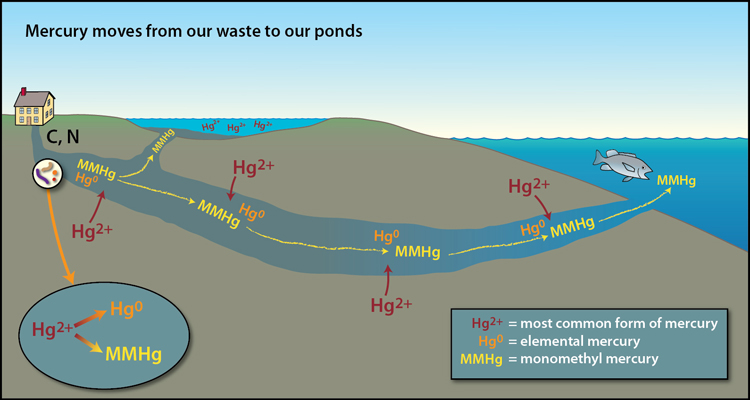
At various stages and locations along the wastewater plume, different forms and amounts of mercury are released. Where the wastewater is first deposited, the bacteria that break down the carbon and nitrogen from the waste consume all of the oxygen in the sediment and groundwater, making it anoxic. Microbes and bacteria switch to anaerobic respiration and the predominant form of mercury, ionic mercury (Hg2+), which sticks to the sediment, converts into elemental mercury (Hg0) and monomethylmercury (MMHg), which do not stick and are more mobile. Once they enter the groundwater, Hg0 and MMHg can easily move downstream. MMHg is the form of mercury found in some fish that has a detrimental impact on human health. Illustration by Jack Cook, Woods Hole Oceanographic Institution (Click image to enlarge)
